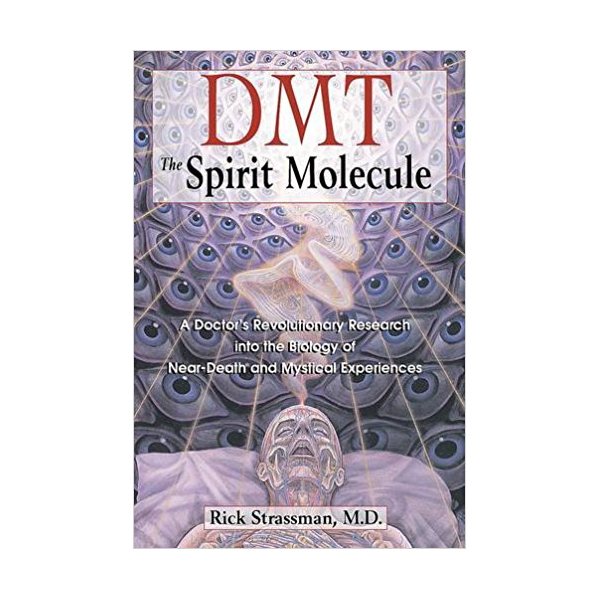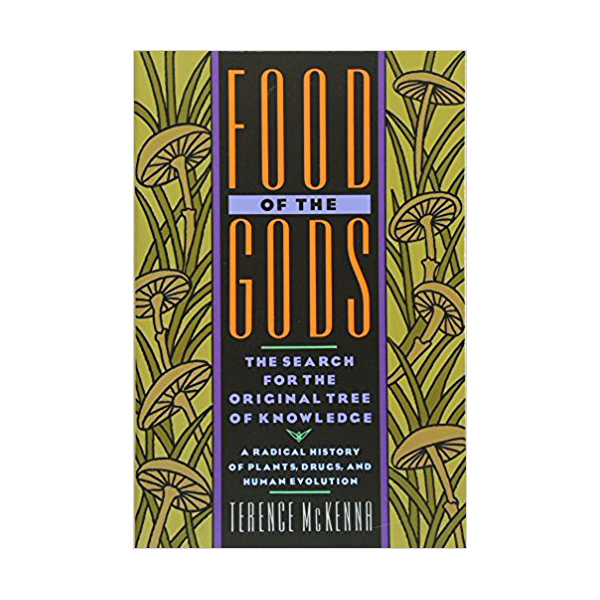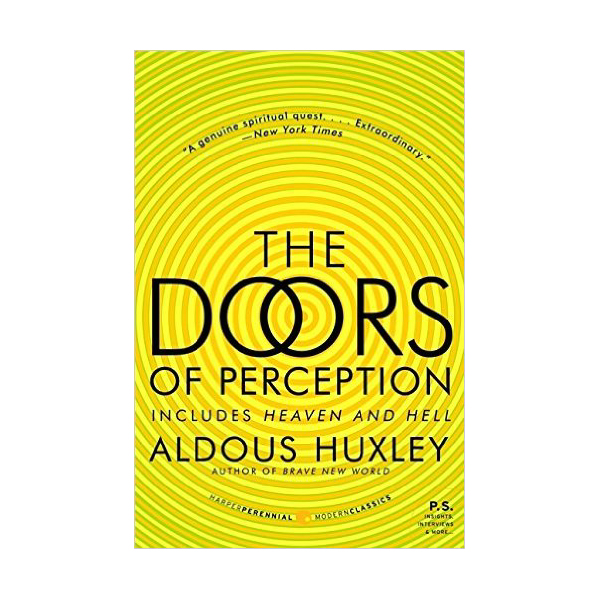Ayahuasca is a traditional plant formula from various regions of the Amazon rainforest.
It's arguably the most potent psychoactive plant formula in existence.
Indigenous cultures have used this formula in their medical systems for hundreds, if not thousands of years. It's still used today to treat addictions, depression. obsessive compulsive disorder, anxiety, and has seen growing international interest for personal and spiritual development.
Ayahuasca combines a potent botanical monoamine oxidase inhibitor and a source of dimethyltryptamine (DMT).
If neither of these terms made any sense to you, keep reading, I will explain...
The Traditional Uses Of Ayahuasca
Ayahuasca is made by decocting the leaves and bark for several hours.
It’s then used used in traditional Amazonian shamanic ceremonies to induce intense visions and spiritual experiences.
It's used as a form of healing and a way to connect with the rainforest to find food or other medicines by the shamans that live there.
Ayahuasca actually has many different applications for the different Amazonian cultures that live there. It's used frequently for those during pregnancy, terminal illness, and by those who have been experiencing chronic health conditions that just won't seem to go away with other therapies.
The very name "ayahuasca" translates to something along the lines of "vine of souls", or perhaps "vine of the dead".
Within these cultures, the healing aspects of ayahuasca are mainly spiritual. The idea is that ayahuasca is merely a guide, taking the soul into the spirit world where healing can take place.
How Does Ayahuasca Work?
The main psycoactive component of Ayahuasca are a set of molecules known as beta-carboline and tryptamine derrivatives [4].
The most well known of the tryptamines is dimethyltryptamine (more commonly known as DMT).
This molecule can be found throughout all forms of life in varying amounts, from plants, insects, and even humans.
The second active group, the beta-carbolines, includes a set of alkaloids found throughout the plant kingdom known as harmane alkaloids.
These are the MAO inhibitors.
DMT and other tryptamine derivatives will not reach the brain in an active form unless the harmane alkaloids are present.
This is why ayahuasca is such an intelligent blend of chemistry. It takes two different plants, each with totally different actions and neither of which are psychoactive on their own, but combined create incredible entheogenic potency in the brain.
Ayahuasca is a perfect demonstration of synergy in botanical medicine.
The First Ingredient Inhibits Monoamine Oxidase
Monoamine oxidase is the enzyme that breaks down the neurotransmitters related to serotonin, dopamine, epinephrine, and noradrenaline... This includes DMT.
The plant that inhibits this monoamine oxidase is Banisteriospsis caapi, otherwise known as the Ayahuasca vine.
This species of vine contains a set of chemicals known as harmane alkaloids.
There are actually numerous other ways to use MAO's like treating depression, and improving the efficacy of nootropic substances and antidepressants that work on the monoamine neurotransmitters.
Pharmaceutical drugs designed to treat depression that use this mechanism include Emsam and Parnate.
More on the uses of MAO inhibitors here.
Banisteriopsis caapi (Ayahuasca vine)
Image Source:
Isulawasi.org
The Second Ingredient Provides The DMT
DMT can be found in over 60 different species of plants and related chemicals are found throughout nature.
Although there can be a couple of different options depending on the availability in the region, the most common choices are Mimosa pudica, Psychotria viridis, or Diplopterys cabrerana.
Mimosa pudica
What Is DMT?
DMT is believed to be released each night in our brains when we sleep from a gland in our brains known as the pineal gland.
It's also released during the final moments before death.
For these reasons, and its ability to induce profound spiritual and dream state experiences, it's often regarded as the molecule responsible for translating our spirit into basic chemistry. This is a deeper conversation that is out of the scope of this article. If you want to know more about this, I recommend you check out this book by Rick Strassman.
Further Reading Recommendations:
How Does Ayahuasca & DMT Work?
This part will get very technical, so if you are not interested in the details of ayahuascas mechanism of action, feel free to skip to the next section. We are about to get into some of the nitty-gritty.
Jump AheadDimethyltryptamine is classified as a monoamine neurotransmitter which places it in the same family as serotonin, dopamine, epinephrine, and norepinephrine.
These neurotransmitters are responsible for a wide range of activities in the brain from memory to mood and emotion.
Breaking it down further, DMT is most similar to serotonin due to its tryptamine base structure (made from the amino acid tryptophan).
Other closely related substances include melatonin (induces sleep), psilocybin (from magic mushrooms), lysergic acid (LSD), and bufotenin (from the Bufo alivarius toad)...
All of these substances have marked effects on the brain, and nearly all of them are psychedelic in some form or another.
The combination of actions provided by the botanicals in Ayahuasca give it a potent synergistic effect inside the brain.
The monoamine oxidase (MAO) inhibition not only allows the DMT to take effect, but also has some mild psychoactive actions on its own [9]. MAO inhibitors are often used as antidepressant medications because of this.
Additionally, some of the harmane alkaloids contained within the Ayahuasca brew will also produce serotonin reuptake inhibition [5], which is a common mechanism of action for antidepressant medications. [11].
Remember serotonin is a monoamine neurotransmitter after all.
DMT works through the serotonin receptors in the brain (both 5HT-1A and 5HT-2A receptor agonism). The anxiolytic effect of DMT works through the 5HT-1A receptors, and the psychoactive effects are thought to be due to a complex relationship between 5HT-2A receptor agonism and mGluR2 receptor modulation through a highly complex dimerization relationship [4, 12].
If this sounds complicated... don’t worry, it is.
There are some varying theories as to what is going on, but this is considered the leading theory. We still do not know conclusively how DMT works in the brain to produce such powerful hallucinogenic effects. [6, 7].
5HT-1A Receptors
5HT-1A receptors are found in high concentrations in the cerebral cortex, hippocampus, septum, raphe nucleus, and amygdala.
These receptors are responsible for neuromodulation of things like heart rate, body temperature, food cravings, drug addiction, sex drive, sleep quality, and a very long list of other actions, all of which are tied in with a complex interaction of serotonin and other neurotransmitters like dopamine and epinephrine.
Sig-1R Receptors
One of the main interactions DMT has is through a receptor known as Sig-1R.
This is a receptor located inside the cell on the endoplasmic reticulum.
Modulation of this receptor, along with 5-HT1A agonism, is believed to produce the neuroprotective effects.
By working on both pathways, Ayahuasca provides bidirectional regulation in the immune cells, triggering both inflammatory and anti-inflammatory signals. This gives Ayahuasca a neuroprotective effect and is even being studied for anti cancer benefit through a similar mechanism.
Drug addiction, chronic depression, Alzheimer's, and even Parkinson's have all been suggested to benefit from the use of Ayahuasca through Sig-1R modulation as well as some of the other actions it has on the body. [4, 5, 10].
How Is Ayahuasca Used?
Image Source: Soul-herbs.com
Ayahuasca is consumed as a strong decoction, which is similar to a tea but involves simmering the ingredients for a few hours in water to extract the chemicals locked away in the bark.
This produces a thick, mud-like brew, of which about 250 mL needs to be consumed to reach the active dosage.
After about an hour of consumption, the effects start to take hold and the level of intensity gradually increases over the next 3-4 hours before tapering off.
The whole experience can last many hours and is very profound.
Many people report complete lifestyle changes after taking a single dose of Ayahuasca.
What Is Ayahuasca Used For?
Ayahuasca is not for the faint of heart, but has shown to be beneficial for people suffering conditions like Parkinson's, Alzheimer's, drug/sex/gambling addiction, chronic depression, and cancer.
Ayahuasca doesn't come without side effects and contraindications, however, so it's wise to discuss the idea with someone knowledgeable on the subject before considering ayahuasca.
This article in no way condones the use of illegal substances by the sunlight experiment, so follow your local laws when considering ayahuasca, and talk to your doctor if you have any pre-existing medical conditions.
Recent Blog Posts:
References:
Dennis. J. McKenna, J. C. Callaway, Charles S. Grob. (1998). he Scientific investigation of Ayahuasca: A review of past and current research. The Hefter review of psychedelic research. Volume 1. Retrieved from the web.
(Vaults of Erowid. erowid.org. Ayahuasca. No date listed. Accessed sept 9 2015.) https://www.erowid.org/chemicals/ayahuasca/ayahuasca.shtml
(Krystle Cole. DMT plant list. neurosoup.com. No date listed. Accessed september 9 2015) http://www.neurosoup.com/dmt/dmt-plants/
Frecska, E., Bokor, P., & Winkelman, M. (2016). The therapeutic potentials of ayahuasca: possible effects against various diseases of civilization. Frontiers in pharmacology, 7. Link.
Dos Santos R. G. (2010). The pharmacology of ayahuasca: a review. Brasília Med. 47 188–195
Moreno, J. L., Holloway, T., Albizu, L., Sealfon, S. C., & González-Maeso, J. (2011). Metabotropic glutamate mGlu2 receptor is necessary for the pharmacological and behavioral effects induced by hallucinogenic 5-HT2A receptor agonists. Neuroscience letters, 493(3), 76-79.
Borroto-Escuela, D. O., Romero-Fernandez, W., Narvaez, M., Oflijan, J., Agnati, L. F., & Fuxe, K. (2014). Hallucinogenic 5-HT2AR agonists LSD and DOI enhance dopamine D2R protomer recognition and signaling of D2-5-HT2A heteroreceptor complexes. Biochemical and biophysical research communications, 443(1), 278-284.
Frecska, E., Bokor, P., & Winkelman, M. (2016). The therapeutic potentials of ayahuasca: possible effects against various diseases of civilization. Frontiers in pharmacology.
Naranjo C. (1967). “Psychotropic properties of the harmala alkaloids,” in Ethnopharmacologic Search for Psychoactive Drugs eds Efron D. H., Holmstedt B., Kline N. S., editors. (Washington, DC: US Public Health Service; ) 385–391.
Samoylenko V, Rahman MM, Tekwani BL, Tripathi LM, Wang YH, Khan SI, Khan IA, Miller LS, Joshi VC, Muhammad I
J Ethnopharmacol. 2010 Feb 3; 127(2):357-67.Jakubovski, E., Varigonda, A. L., Freemantle, N., Taylor, M. J., & Bloch, M. H. (2015). Systematic review and meta-analysis: dose-response relationship of selective serotonin reuptake inhibitors in major depressive disorder. American Journal of Psychiatry, 173(2), 174-183.
Nichols D. E. (2004). Hallucinogens. Pharmacol. Ther. 101 131–181. 10.1016/j.pharmthera.2003.11.002





















As COVID-19 continues to spread around the world, we’re getting a lot of questions on what the potential role of herbal medicine is during the outbreak. Learn how the virus works and how to limit your chances of transmission.